No. 155 Squadron RAF is a former Royal Air Force squadron.

Number 17 Squadron, currently No. 17 Test and Evaluation Squadron (TES), is a squadron of the Royal Air Force. It was reformed on 12 April 2013 at Edwards Air Force Base, California, as the Operational Evaluation Unit (OEU) for the Lockheed Martin F-35B Lightning.
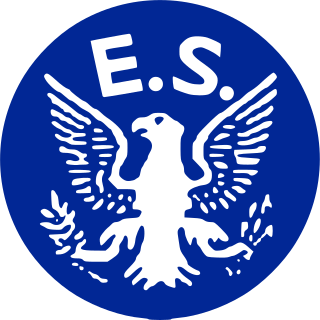
The Eagle Squadrons were three fighter squadrons of the Royal Air Force (RAF) formed with volunteer pilots from the United States during the early days of World War II (1940), prior to the United States' entry into the war in December 1941.

133 Squadron RAF was one of the famous Eagle Squadrons formed from American volunteers serving with the Royal Air Force (RAF) during the Second World War.

The 4th Fighter Group was an American element of the United States Army Air Forces (USAAF) Eighth Air Force during World War II. The group was known as the Debden Eagles because it was created from the three Eagle Squadrons of the Royal Air Force: No. 71, No. 121 Squadron RAF, and No. 133 Squadron RAF. These squadrons became the 334th, 335th, and 336th Fighter Squadrons of the 4th Fighter Group based at RAF Debden. The group was the first fighter group to fly combat missions over German airspace, the first to escort bombers over Berlin, and the first selected to escort bombers on shuttle bombing runs landing in Russia. The group was credited with shooting down 1,016 German planes.

The 335th Fighter Squadron is a United States Air Force unit. It is assigned to the 4th Operations Group and stationed at Seymour Johnson Air Force Base, North Carolina.
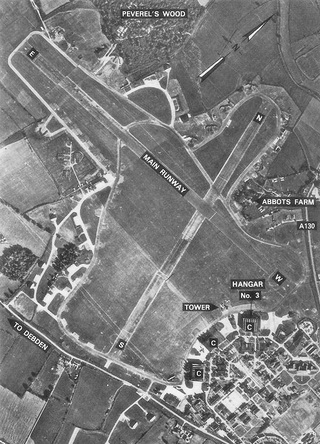
Royal Air Force Debden or more simply RAF Debden is a former Royal Air Force station located 3 miles (4.8 km) southeast of Saffron Walden and approximately 1 mile (1.6 km) north of the village of Debden in north Essex, England
No. 122 (Bombay) Squadron was a Royal Air Force fighter squadron during the First and Second World Wars.
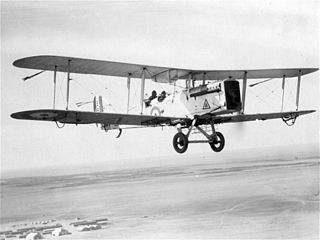
The Airco DH.9A is a British single-engined light bomber that was designed and first used shortly before the end of the First World War. It was a development of the unsuccessful Airco DH.9 bomber, featuring a strengthened structure and, crucially, replacing the under-powered and unreliable inline 6-cylinder Siddeley Puma engine of the DH.9 with the American V-12 Liberty engine.
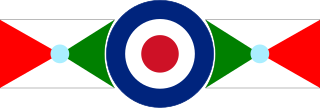
No. 253 Squadron was a flying squadron of the Royal Air Force between 1918 and 1947. Originally formed in 1918, it served in WW1 flying coastal reconnaissance and anti-submarine patrols. Later in WW2 it took part in the Battle of France, the Battle of Britain, and then fought in the Mediterranean Theatre of Operations in Algeria. The squadron was disbanded on 16 May 1947, and briefly revived as a night-fighter squadron from 18 April 1955 to 2 September 1957.
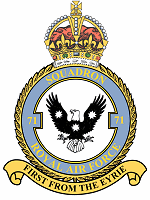
No. 71 Squadron was a Royal Air Force aircraft squadron. The number has been used three times: once by the Royal Flying Corps for an Australian Flying Corps squadron; in the Second World War as the first of three Eagle Squadrons; and post-war as a fighter-bomber unit under the command of Royal Air Force Germany.
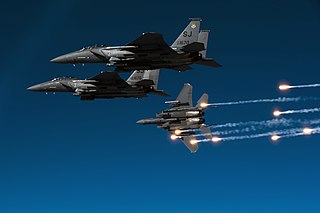
The 4th Operations Group is the flying component of the 4th Fighter Wing, assigned to the United States Air Force Air Combat Command. The group is stationed at Seymour Johnson Air Force Base, North Carolina.
The 335th Squadron, callsign "Tigers", is the oldest squadron in service with the Hellenic Air Force formed on the 10th of October 1941 at Aqir airfield in Palestine as a unit in exile. It is based at Araxos Air Base in the Peloponnese, forming part of the 116th Combat Wing. Until March 2008, the squadron was equipped with the A-7H Corsair, and is operating with 30 newly purchased F-16 Block 52+ aircraft.
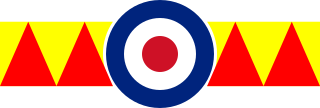
No. 604 Squadron RAF was a squadron of the Royal Air Force noted for its pioneering role the development of radar-controlled night-fighter operations. The squadron was established in March 1930 at RAF Hendon as a day-bomber squadron of the Royal Auxiliary Air Force. In July 1934, the squadron transitioned to two-seat fighters. Shortly after the commencement of World War II in 1939, the squadron was reassigned to a night-fighter role.

Pilot Officer Phillip Howard Leckrone was an American pilot who flew with the Royal Air Force during the Battle of Britain in World War II. He was one of 11 American pilots who flew with RAF Fighter Command between 10 July and 31 October 1940, thereby qualifying for the Battle of Britain clasp to the 1939–45 campaign star. He was killed in a flying accident in January 1941.

No. 600 Squadron Royal Auxiliary Air Force is a squadron of the RAF Reserves. It was formed in 1925 and operated as a night fighter squadron during the Second World War with great distinction. After the war, 600 Squadron went on to operate jet fighters until 1957. Reactivated in 1999, 600 Squadron is the only RAF Reserve unit within the M25. It is a Headquarters Support Squadron and provides trained part-time reservists to support RAF operations around the world.
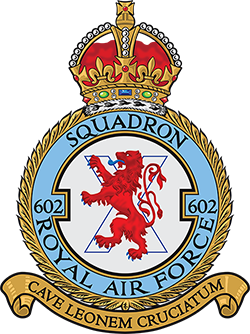
602 Squadron is a Royal Auxiliary Air Force squadron. Originally formed in 1925 as a light bomber squadron, its role changed in 1938 to army co-operation and in 1939 to that of a fighter squadron.
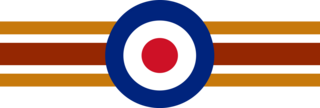
Number 125 (Newfoundland) Squadron was a Royal Air Force squadron active during World War II and briefly in the mid-1950s. Throughout its service the squadron primarily operated night fighters.
No. 123 Squadron of the Royal Air Force was a British aircraft squadron in the First and Second World Wars. It was disbanded for the last time on 20 June 1945.

The Eagle Squadrons Memorial is a Second World War memorial in Grosvenor Square, London. It commemorates the service of the three Royal Air Force Eagle Squadrons from 1940 to 1942, during the Battle of Britain, and in particular their 244 Americans and 16 British fighter pilots, of whom 71 were killed. The bronze sculpture of an eagle which tops the memorial is by Elisabeth Frink.

















